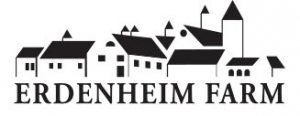However, make sure the keyword placement sounds natural and avoid stuffing unnecessary words. However, it’s different from when you want to rank for “best webcams for streaming”. Users with this intent simply wish to compare the best webcams for streaming purposes. Meanwhile, when a user searches for “buy a JBL Bluetooth speaker” Google instantly shows eCommerce pages as the top results.
Here’s an example of a SERP snippet for our post on “7-step SEO strategy” with the focus keyword SEO strategy. Once you’ve established the topic, you can go back to the level of keywords and select one that will represent your topic the best – the focus keyword (also called the target keyword). We’ve covered the first step in this process – finding the right keywords – in the previous chapter. In the past, content creators did keyword research only to find the keywords with high search volumes. Besides keyword suggestions, it calculates the difficulty of ranking for the keywords and helps you to analyze the SERP. Besides the keyword suggestions, professional tools offer other useful SEO metrics and insights to evaluate the keywords and pick the best ones.
Step #8: Focus On Content Design
Other off-page tactics like social media management, online reputation management, and email marketing can indirectly benefit your SEO by driving brand awareness and engagement. Search engines use complex processes and criteria to rank results, aiming to provide users with the best search experience. The term “SEO” can also refer to a person, such as a “search engine optimization expert” or similar.
Besides reading, though, consider getting hands-on experience with SEO. So, when you practice SEO, you’ll prioritize certain factors over others. Search engine optimization has evolved since the days of Jefferson Starship, with Google becoming the leader in the industry. That’s why, when talking about SEO, most people are talking about Google SEO. EEAT stands for Expertise, Experience, Authority, and Trustworthiness.
The web pages which follow the best practices outrank every other web page in the competition and rank on top for those keywords. The title tag is a header title element displaying the summary of your website’s content on the search engine results page. It also influences click-through rates and is the most important factor of on-page SEO. Search engines display the first 50–60 characters of the title tag. It will improve your search SEO Anomaly rankings on a SERP, and also maintain the integrity of your website.
- SEO involves improving a website’s visibility on search engines, such as Google.
- There are lots of schema types that apply to different types of businesses.
- By understanding which keywords are relevant to your business and your customers, you can create content that is more likely to be found by those who are searching for it.
- The organic results are “earned” placements that are determined by Google’s algorithm to be the overall best, most relevant results for a given search.
Title tags
It gives more exposure and allows businesses to promote their brands, products, and services to local communities. As the go-to search engine, Google processes more than 3.5 billion searches per day. Thus, ranking higher on Google search results has the potential to drive significant traffic to your site. While SEO takes some time to give consistent and lasting results, SEM offers a nearly instant outcome. You will quickly see how many clicks and conversions your ads are generating on search engines.
Master Semrush, Ahrefs, Moz & More!
SEO Can Put You Ahead of The Competition – If two websites are selling the same thing, the SEO optimized website is more likely to have more customers and make more sales. It provides access to market-leading SEO tools and a wealth of helpful resources, including SEO courses. Practicing SEO is the best way to continue your learning journey and could be key to growing your website’s revenue. You can start building your reputation with Semrush’s Link Building Tool.
